#north-western province
Text
Well, the snow has officially won my dumb fuck game of chicken.
This evening I dug my snowblower out of the bank it was buried in, pried it off the ground where it had welded itself, and did the worst possible job clearing my driveway.
Because I would definitely have had to call in idiot to work tomorrow (sick wouldn't have worked, they all knew this was going to happen) because I wouldn't have been able to get my truck out of the driveway if I hadn't.
Anyway. My attempts to wish winter away have failed. From when I left this morning to when I got home we had a new foot of snow.
And it's still coming down.
#im not the biggest idiot in the western provinces#but today im at least in the top 5#good thing i spent a chunk of my student loan on a good snowblower a couple years ago#sometimes life in the north is like that#the islander instinct to ignore it and wait for it to go away are still going strong#although theres nothing more north1ern redneck than swearing at the snow as you clear the driveway in a cowboy hat and camo vest
3 notes
·
View notes
Text
Apply for 2024 Admission in Your Province
To apply for admission in South African provinces, you generally need to follow these steps:
Research the Institutions.
Check Admission Requirements.
Prepare Documents.
Complete the Application Form.
Pay the Application Fee.
Submit Application.
Wait for your Response.
Acceptance and Enrollment.
Apply for 2024 Admission in any SA Province
Choose Your Province and Apply for the 2024 Admission…

View On WordPress
#Eastern Cape#Free State#Gauteng#KwaZulu Natal#Limpopo#Mpumalanga#North West#Northern Cape#Province Western Cape
0 notes
Text
Moth Of The Day #215
Glover's Silkmoth
Hyalophora gloveri
From the saturniidae family. They have a wingspan of 80-100 mm. They inhabit woodland, suburban gardens and a variety of other wooded habitats. They can be found in the Rocky Mountain states, the western parts of the northern Great Plains, and the Canadian prairie provinces, north-west to at least central Alberta, and northern Mexico.


Image sources: [1] [2]
#moth#moths#lepidopterology#lepidoptera#nature#pretty moth#insect#bugs#moth of the day#motd#lepidoptery#entomology#bugblr#bug#insects#beautiful moth#hyalophora gloveri#glovers silkmoth#saturniidae#saturniidae moth#saturniid
554 notes
·
View notes
Text
Shattered Eagle: Fall of an Empire
Demo (216k WIP, 07/14/2024) | Forum
You are an advisor in a declining empire, beset by unrest, barbarians, and forces beyond your comprehension. Can you save the empire from doom?
Explore a fictional world inspired by the late Roman Empire.
Be male or female, cisgender or transgender, straight, gay, bisexual or asexual.
Serve the imperial family dutifully, or secure your own rise to power.
Choose from up to five careers, from a veteran of the legion to a shadowy spymaster.
Learn the secrets of sorcery or untangle the ancient mysteries behind the Empire.
Navigate the viper’s nest of imperial politics to find allies or paramours, including the empress herself, a cunning senator, a ruthless crime boss, a barbarian general, or a foreign prince.
SETTING SYNOPSIS
Through over five centuries of conquest, the Iudian Empire has come to rule the Inner Sea, becoming the most powerful realm in the known world.
From the western hills of Ezperia, the northern forests of Hevernica, the sophisticated cities of Attika, the eastern deserts of Midyan, and the southern rivers of Seyet, all fell before what the world calls the Iudian Sorceresses, the women who wield fire itself against their enemies. For it is indeed women who rule in Iudia, as ordained by the mother goddess Gaia herself.
Yet, the Empire is not without troubles, and her glory days seem past her. Crippling civil wars, endemic corruption and ceaseless invasion have all contributed to the woes of the once great Empire.
Threats old and new rear their heads in times such as these. A resurgent Pharia, the Empire’s old eastern rival, threatens to seize the eastern provinces. Civil unrest has escalated in the capital of the capital, the flames fanned by an increasingly bold criminal underground.
The greatest danger may come from the north, however. Beyond the cold barbarian lands comes a enemy you have only heard rumor of, the Witch King of the Ongi. It is said the warrior rides at the head of a massive host, wielding great magic that has united all the tribes of the far steppe together out of fear of his power. He has called a holy war against the Empire, claiming it as a nation of demons to be cleansed from the earth.
Will you hold the Empire steady in her time of crisis, claw your way to power, or seek to solve ancient mysteries? The fate of Iudia is in your hands.
MAJOR CHARACTERS
Empress Julia Vitallia Hevernica (48F)
A harsh woman who forced the Empire back together with blood and steel, Julia has reigned as Empress for a decade. She is a strong military leader and a pious woman, who frequently prays to the Goddess for guidance. She is cruel towards her enemies, but possesses a certain pragmatic streak, and has invested much of her authority in you so that you might govern the Empire while she wages war.
Consul Consentia Plinia Dorica (55F)
The leader of the now-sidelined Senate, the ancient legislature of grandiose aristocrats which once governed the Empire alone, Consentia is bent on advocating for what she sees as the fundamental rights of the public and restoring the power of the old Republic. She is a passionate orator and the wealthiest woman in the Empire, barring the Empress herself, and has struck a deal with the crime lord Ceto in order to gain the support of the masses for her reforms.
Tribune Ceto Vera (43F)
Coming up from the poorest slums of the capital, Ceto is the Empire’s most notorious crime lord, ruling the streets by both spreading out her ill-gotten gains to the people and making brutal examples out of those who refuse to acknowledge her authority. Lately, she has entered politics and become a staunch advocate for the rights of the common people, forming an uneasy alliance with the Consul to push back against the ever encroaching imperial autocracy.
Legate Antonius Lethungius/Amalrik Wulfhid (40M)
Born to an imperial mother who named him Antonius and a barbarian father who named him Amalrik, the Legate is a man caught between two bitterly opposed worlds. A skilled and charismatic general, he has won the steadfast loyalty of the Empire's barbarian auxiliaries with his victories on the field of battle, yet his true loyalties remain unknown. Is he a dutiful man of the Empire, or a proud, unbowed barbarian?
Prince Darius of Pharia (33M)
Darius, third son of the great King of Kings, serves in the imperial capital as the ambassador and hostage from the eastern realm of Pharia, the Empire’s oldest and most powerful rival. Over the past decade and half, however, Darius has become more than a mere captive, having established great wealth and influence in the capital with his charm and wit, and is now a major power player in his own right.
CONTENT WARNING
These themes and depictions are present in the current demo, or are planned to be present in the final product.
Depictions of violence & warfare (including gore), references to torture, sexual references and themes, drug & alcohol abuse, physical & emotional abuse, sexism, suicide, slavery, homophobia, & transphobia.
UPDATE LOG
04/14/2024: Chapter I (50k Words | 18k Playthrough)
05/07/2024: Chapter II (105k Words | 39k Playthrough)
06/05/2024: Chapter III (156k Words | 59k Playthrough)
07/14/2024: Chapter IV (216k Words | 73k Playthrough)
#hosted games#dashingdon#interactive novel#interactive fiction#choice of games#if wip#shattered eagle#choicescript#wip game#cyoa game#cog wip#shattered eagle: fall of an empire
198 notes
·
View notes
Text
Imagine that a century or two from now, the eastern half of the United States is conquered by the Canadian Empire, its intelligentsia deported, its land colonized by Canadian immigrants, and its remaining people mostly gradually absorbed into a Neo-Canadian identity. The West reorganizes, developing a new political and cultural center, and comes to regard itself as the "true" United States, with the remnant culture of the East (by now much changed by Canadian rule) as representing an unchanged tradition stretching back to the time of George Washington. The holdout western half is subsequently conquered by the Reformed Mexican Empire, and while most of the population remains in situ, its elite is taken to Mexico City. There, for three or four generations, they do their best to maintain their distinct American identity, focusing on the American "civil religion," the distinctive political ideals and cultural features that mark them out as Americans, and come up with a new way of interpreting their history that allows America to be a perennial idea, something not directly physically tied to the territory of the United States, which no longer exists. They compose a body of historical works based on Washington Irving's rather fabulistic approach to early American history, the half-remembered popular versions of the stories of Columbus and the Pilgrims, the First Thanksgiving, even the Revolutionary War. They don't have access to the original texts anymore--let's say this is all taking place in a post-Collapse North America where long-range travel and communication is difficult and a lot of history has been lost--but they do their best. They append to these books, or include in their text, of history a copy of the Constitution, big chunks of the United States Code, and Robert's Rules of Order.
Subsequently, the Empire of Gran Columbia invades, conquers southern and central Mexico, and its Emperor lets the captive Americans go home. They return north, mostly to California, find that the version of American history and civics that is remembered there isn't the same as the version they have (not that the Californian one is correct--the Mexican Empire has suppressed English-language education and high culture in its Aztlani provinces), and set about reforming and reorganizing the Western States (as they're now called) to be more in line with the forms they brought back from the exile. In the meantime, other bits of important literature start being kept in libraries next to copies of the received histories: some bits of early American literature, like Hawthorne, the Song of Hiawatha, some highly abridged Herman Melville, Thomas Paine--heck, even some John Locke, and quotes or fragments from Shakespeare. Some traditionalists now argue the capital of the United States has always been located in San Francisco, and that Washington, D.C. only because the capital later, under the influence of Eastern heretics.
In the following centuries, the Western States retain their independence for a time, but eventually become a secondary battleground for a lot of other empires--the Mexicans, the Canadians, the Pan-Pacific Federation, and so forth. American culture remains distinctive, insulted in part by its unique traditions, though now everybody speaks Future Spanish, and only learns English to read the old texts. In this period additional material, including later compositions, continues to accrete, forming a distinct body of sacred American scripture, although it does not exist in a single canonical form. Attempts to reconcile distinct sources, like more literal and historically-grounded accounts versus the simplified narratives of figures like Irving, produce hybrid texts that sometimes are full of internal conflicts.
Oh, and through all this, some institutions of American government like the Supreme Court still function, although their rulings only apply to Americans, and there isn't much in the way of a federal bureaucracy.
Finally the Great and Sublime Brazilian Potentate conquers most of the Americas, sets up an American client state that roughly coincides with the heartland of the old Western States (California, Oregon, most of Washington and Nevada), and allows the Americans to elect their own President (subject, of course, to Brazilian approval). During this period, an apocalyptic street preacher from Los Angeles claims to have inherited the authority and power of George Washington, and is executed by the Brazilians; his later followers point to the prophecies of Emperor Norton, and out-of-context bits of a Quebecois translation of Moby-Dick and some Mark Twain stories to say no, really, he was George Washington. Inexplicably, a version of this religion becomes the dominant faith of the Brazilian Empire before it collapses. But long before then the American state in California fails, crushed when it tries to revolt against Brazilian rule; the remnant Easterners likewise dwindle down to only a few hundred souls living in a village in Alexandria, Virginia. Centuries from now, as the descendants of the descendants of the Brazilians colonize Mars, they will point to the sacred Americanist scriptures, the Neo-Americanist narratives of their prophet's life, and the letters written by the early leaders of Neo-Americanism, and say, "all of this was written by the spirit of George Washington, and is free from contradictions." Meanwhile the remnant Americanists, who have been writing about Americanism and how it applies to their everyday lives in the centuries since, and whose commentary has formed around the copies of the last editions of the U.S. Supreme Court Reporter (SCOTUS managed to outlast the final American state by a hundred years or so) plus the thoughts of the remaining Americanist community in Mexico, continue to regard their traditions as the unbroken and unaltered practice of American culture, politics, and ideals as they existed since the Revolutionary War.
This is, as far as I can tell, approximately how the Bible was composed.
1K notes
·
View notes
Text
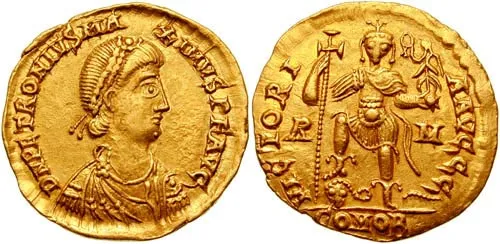
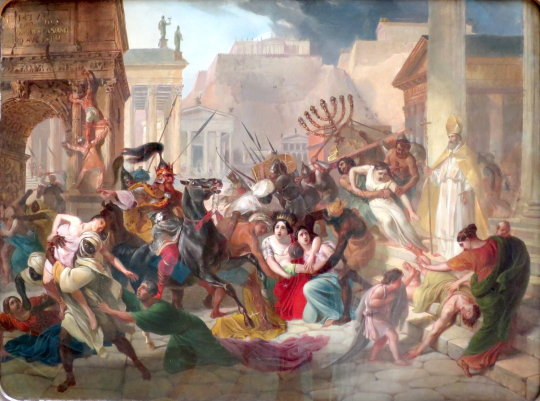
Petronius Maximus --- The dipshit Roman emperor who caused the sack of Rome because he was an arrogant dipshit.
Petronius Maximus was a wealthy Roman politician born in 397 AD to old Roman money. Like many wealthy Romans he went into politics and throughout the early 5th century climbed the ranks of Roman government until he became one of the most powerful men in the Western Roman Empire. He was crafty and he was ambitious. He was also a dipshit and an asshole.
By the 450's P. Maximus had a clear plan, to create a power vacuum in Rome that he could cunningly fill. He began by turning the emperor at the time, Valentinian III, against his magister militum Flavius Aetius. As magister militum Aetius was commander of the Roman Army, and had proven himself a master tactician and brilliant diplomat. Through military victories and diplomacy Aetius was barely holding a crumbling empire together. Maximus convinced Valentinian III that Aetius was looking to usurp his throne. Thus in 454 Valentinian summoned Aetius to his palace and personally murdered him with his sword. Maximus had organized the death of the most talented Roman official in the empire, which in the grand scheme of things was probably a big mistake. With Aetius dead, Maximus expected he would take Aetius' place as magister militum. However Valentinian refused to appoint him as magister militum. Thus in 455 AD, Maximus had him assassinated, hiring two of Aetius' bodyguards to do the deed as revenge.
Several powerful Romans claimed the Imperial throne but Maximus managed to beat them all to the punch by taking over the Imperial Palace and immediately marrying Valentinian's widow, Licinia Eudoxia. Licinia didn't know Maximus had murdered her husband at the time but had suspicions. He also forced her daughters, Placidia and Eudocia to marry his sons. Through deceit and murder Maximus had managed to weasel his way into the Roman Imperial family and was now creating his own Imperial dynasty. Thus Petronius Maximus had become Emperor Dipshit, ruler of the shiny turd of what was left of the Western Roman Empire.
Problem was, when Emperor Dipshit married off Placidia and Eudocia to his sons, he canceled Eudocia's arranged marriage to Hunneric, who was the son of Geiseric, king of the Vandals. The Vandals were a Germanic tribe that had set up a prosperous kingdom in the former Roman province of North Africa, and were constantly raiding the Italian coast. Valentinian had arranged the marriage of Eudocia as a peace offering to Geiseric. Geiseric had received a letter from Eudoxia informing him that Maximus had killed her husband and was canceling the marriage of Eudocia. Geiseric was enraged at Empror Dipshit for canceling the marriage, and sent a Vandal fleet and army to Rome in response. "No problem" said Emperor Dipshit, "we got the Roman Army".
Except there was no Roman Army. Not really. After the death of Aetius the remains of the standing full time professional army had collapsed almost completely. Even Aetius was very dependent on mercenaries and allies. Nobody wanted to enlist in the Roman Army in the 5th century, with Romans going so far as to cut off their own fingers to avoid conscription. The Roman economy was a mess, the Imperial bureaucracy was riddled with corruption, the life of the average Roman was miserable, and by the 5th century most Roman emperors were snobbish, over-privileged, incompetent out of touch dipshits. The empire was dying and everybody knew it. Few believed it was worth saving, and nobody wanted to die for a dipshit emperor such as Emperor Dipshit. By 455 AD what was left of the Roman Army consisted of militia units called "limitanei" who acted as border patrolmen far away from Rome. For more complex military operations the Romans were fully dependent on mercenaries and allies. Emperor Dipshit attempted to enlist the help of the Visigoths, but they were like, "LMFAO nooo, you made your bed now lie in it!" I speculate they knew Maximus was a dipshit who was probably gonna get them all killed.
Emperor Dipshit knew it was a hopeless situation, so he made an announcement to the Roman people to flee and save themselves, then he too turned tail and fled. He was spotted by a large group of Roman refugees, who formed a mob and beat him to death. Good riddance. Emperor Dipshit's glorious reign lasted 77 days.
As far as sackings go the sack of Rome in 455 AD wasn't too bad. The Vandals were Christians, so the Pope was able to convince them not to do the more horrible things like rape and murder civilians, or burn down the city. So for the most part the Vandals refrained from bloodshed and arson. However they did take as many Romans into slavery as they could fit on their ships, and they also looted the city of almost everything of value. Even the bronze tiles on the roof of the Temple of Jupiter were pried off and carted away. Also Geiseric carted off Eudocia and married her off to his son Huneric.
The Vandal's sack of Rome in 455 is where we get the term "vandalism" today. Also did I mention that Petronius Maximus was a dipshit?
#history#ancient history#ancient rome#dipshit#fall of rome#vandals#roman empire#western roman empire#late roman empire
223 notes
·
View notes
Text
[Hanfu · 漢服]Chinese Warring States period(475–221 BC) Traditional Clothing Hanfu-Life of Qu Yuan(屈原)













【Historical Artifact Reference】:
China Warring States period (475-221 BC):Silk painting depicting a man riding a dragon (人物御龍帛畫)
it was discovered in the Zidanku Tomb no. 1 in Changsha, Hunan Province in 1973. Now in the Hunan Museum
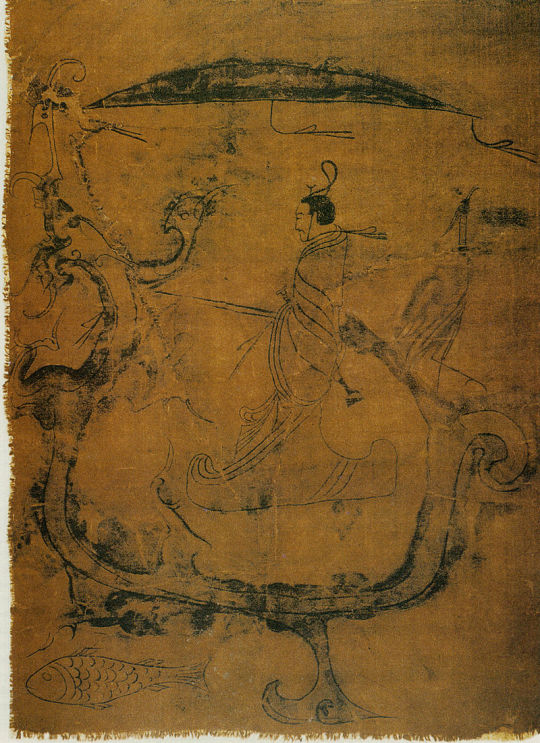
A man with a sword is riding a dragon by holding the rein. The dragon's body was given the shape of a boat. A little egret is standing at the tail of the dragon. A carp under the dragon is leading the way. The umbrella in the top middle of the picture shows the owner's nobility. The work has become associated with the Chu poet Qu Yuan’s famous verse from his poem Shejiang (涉江, Setting foot in the river), ‘Carrying a long sword with weird colour; Wearing a qieyun–styled high cap.” (帶長鋏之陸離兮, 冠切雲之崔嵬)
Western Zhou Dynasty seven-huang jade pendant with linked beads/西周七璜联珠组玉佩

About Qu Yuan(屈原)
Qu Yuan (c. 340 BC – 278 BC)was a Chinese poet and aristocrat in the State of Chu during the Warring States period. He is known for his patriotism and contributions to classical poetry and verses, especially through the poems of the Chu Ci anthology (also known as The Songs of the South or Songs of Chu): a volume of poems attributed to or considered to be inspired by his verse writing. Together with the Shi Jing, the Chu Ci is one of the two greatest collections of ancient Chinese verse. He is also remembered in connection to the supposed origin of the Dragon Boat Festival.
Historical details about Qu Yuan's life are few, and his authorship of many Chu Ci poems has been questioned at length.[4] However, he is widely accepted to have written "The Lament," a Chu Ci poem. The first known reference to Qu Yuan appears in a poem written in 174 BC by Jia Yi, an official from Luoyang who was slandered by jealous officials and banished to Changsha by Emperor Wen of Han. While traveling, he wrote a poem describing the similar fate of a previous "Qu Yuan."Eighty years later, the first known biography of Qu Yuan's life appeared in Han dynasty historian Sima Qian's Records of the Grand Historian, though it contains a number of contradictory details.
Life of Qu Yuan(屈原)
The only surviving source of information on Qu Yuan's life is Sima Qian's biography of him in Records of the Grand Historian (Shiji), although the biography is circumstantial and probably influenced greatly by Sima's own identification with Qu.Sima wrote that Qu was a member of the Chu royal clan and served as an official under King Huai of Chu (reigned 328–299 BC).
During the early days of King Huai's reign, Qu Yuan was serving the State of Chu as its Left Minister. However, King Huai exiled Qu Yuan to the region north of the Han River, because corrupt ministers slandered him and influenced the king.Eventually, Qu Yuan was reinstated and sent on a diplomatic mission to the State of Qi. He tried to resume relations between Chu and Qi, which King Huai had broken under the false pretense of King Hui of Qin to cede territory near Shangyu.
During King Qingxiang's reign, Prime Minister Zilan slandered Qu Yuan.[9] This caused Qu Yuan's exile to the regions south of the Yangtze River. It is said that Qu Yuan returned first to his home town. In his exile, he spent much of this time collecting legends and rearranging folk odes while traveling the countryside. Furthermore, he wrote some of the greatest poetry in Chinese literature and expressed deep concerns about his state. According to legend, his anxiety brought him to an increasingly troubled state of health. During his depression, he would often take walks near a certain well to look upon his thin and gaunt reflection in the water. This well became known as the "Face Reflection Well." On a hillside in Xiangluping (at present-day Zigui County, Hubei Province), there is a well that is considered to be the original well from the time of Qu Yuan.
In 278 BC, learning of the capture of his country's capital, Ying, by General Bai Qi of the state of Qin, Qu Yuan is said to have collected folktales and written the lengthy poem of lamentation called "Lament for Ying". Eventually, he committed suicide by wading into the Miluo River in today's Hunan Province while holding a rock. The reason why he took his life remained controversial and was argued by Chinese scholars for centuries. Typical explanations including martyrdom for his deeply beloved but falling motherland, which was suggested by the philosopher Zhu Xi of the Song dynasty, or feeling extreme despair to the situation of the politics in Chu while his lifelong political dream would never be realized. But according to "Yu Fu," widely considered to be written by Qu himself or at least, a person who was very familiar with Qu, his suicide was an ultimate way to protect his innocence and life principles.[citation needed]
Qu Yuan is said to have expressed his love for the ruling monarch, King Huai of Chu, through several of this works, including "The Lament" and "Longing for Beauty".
Dragon Boat Festival/端午节
Popular legend has it that villagers carried their dumplings and boats to the middle of the river and desperately tried to save Qu Yuan after he immersed himself in the Miluo but were too late to do so. However, in order to keep fish and evil spirits away from his body, they beat drums and splashed the water with their paddles, and they also threw rice into the water both as a food offering to Qu Yuan's spirit and also to distract the fish away from his body. However, the legend continues, that late one night, the spirit of Qu Yuan appeared before his friends and told them that he died because he had taken himself under the river. Then, he asked his friends to wrap their rice into three-cornered silk packages to ward off the dragon.
These packages became a traditional food known as zongzi, although the lumps of rice are now wrapped in leaves instead of silk. The act of racing to search for his body in boats gradually became the cultural tradition of dragon boat racing, held on the anniversary of his death every year. Today, people still eat zongzi and participate in dragon boat races to commemorate Qu Yuan's sacrifice on the fifth day of the fifth month of the traditional lunisolar Chinese calendar.
--------
Recreation Work by : @晴南
Xiaohongshu🔗:http://xhslink.com/CU2x9J
--------
#chinese hanfu#Warring States period(475–221 BC)#Qu Yuan(屈原)#State of Chu#china history#chines history#hanfu#hanfu accessories#hanfu_challenge#chinese traditional clothing#china#chinese#chinese aesthetics#chinese historical fashio#漢服#汉服#中華風#晴南#Dragon Boat Festival/端午节
174 notes
·
View notes
Text

Los Gigantes, Córdoba, Argentina: Los Gigantes is the name given to a mountain range located in the central-western region of the province of Córdoba, in the Argentine Republic. It has an altitudinal development from highest to lowest, in a north-south direction, and is located within the so-called Sierras Grandes. It is the northern limit of the Pampa de Achala, to which it belongs, and together with it make up the locally known as High Peaks. Wikipedia.
102 notes
·
View notes
Text


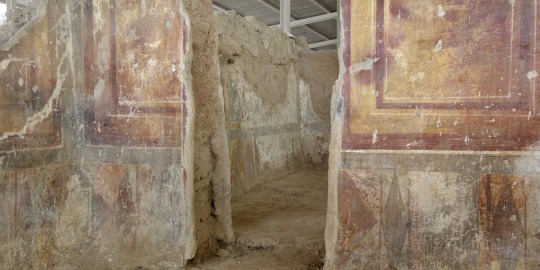


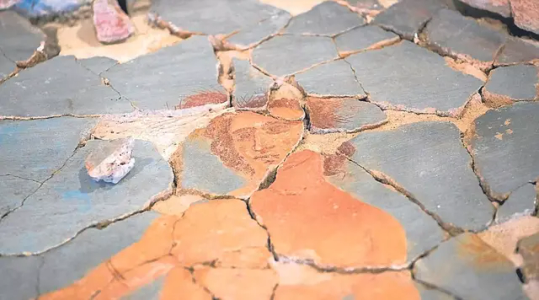
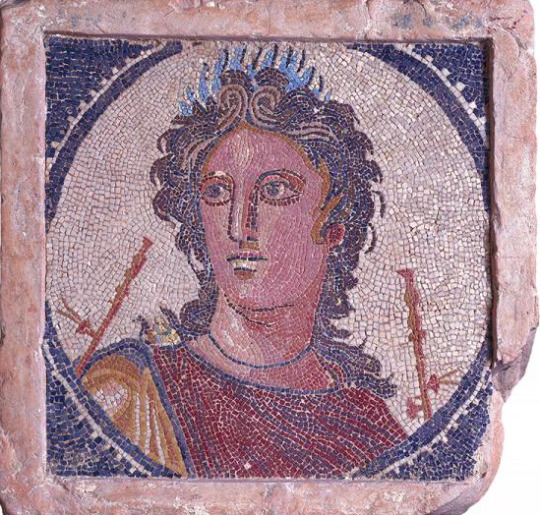



Vil·la romana dels Munts (Els Munts Roman Villa) is one of the best preserved Roman villas in the Iberian peninsula, the Roman province of Hispania. It's located in modern-day Altafulla (Camp de Tarragona, Catalonia), in the countryside near the important Roman city of Tarraco (modern-day Tarragona). The villa's archaeological remains are included in the UNESCO World Heritage Site "Archaeological Ensemble of Tarraco".
The oldest part of the villa dates from the 1st century AD, when it was a small farming villa, but it was soon abandoned. In the early 2nd century AD, the old villa was demolished and the place was rebuilt as a large, aristocratic villa: it still kept having a significant agricultural role, but included a magnificent and luxurious residence area. To get an idea of how luxurious it was, a normal 2nd-century Roman villa might have one marble covering, while Els Munts has hundreds of coverings made of marble imported from the Eastern Mediterranean and the North of Africa. The residence also had wall paintings, mosaic floors, statues, fountains, and artificial ponds. The villa also included a bath house and a the largest temple of the Mithraic religion known in the Western Roman Empire.
When the Roman emperor Hadrian stayed in Tarraco the winter of 122-123 AD, it's thought that this villa could have been the place where he was staying. A statue of Antinous (Hadrian's lover) was found in Els Munts.

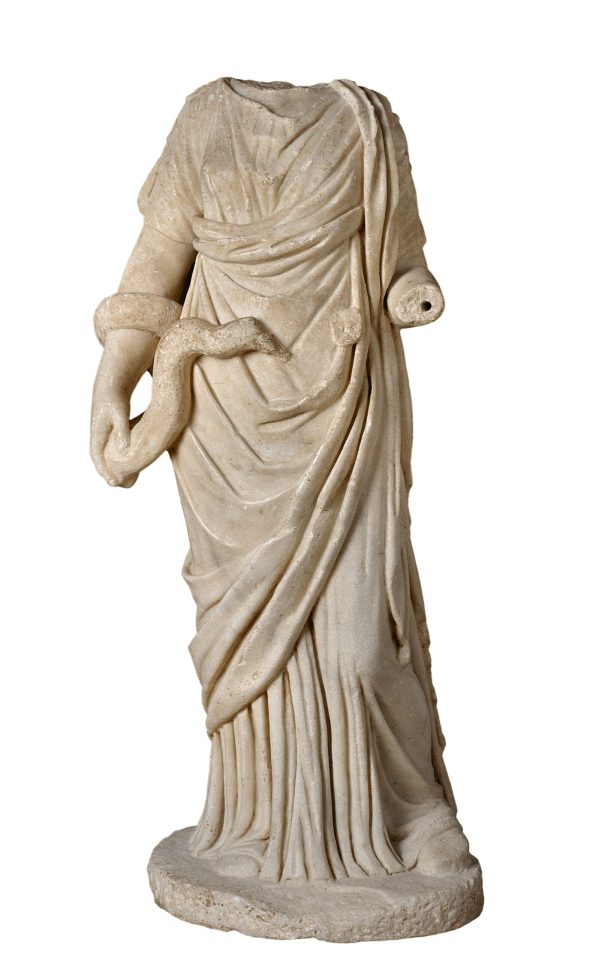

Statue of Antinous, Higea, and Asclepios found in Els Munts. Nowadays in Museu Nacional Arqueològic de Tarragona.
The villa was partially destroyed by a fire in the late 3rd century, starting its decline. In the early 5th century, it was remodelled into a Late Roman villa and then a Visigothic one, and was in use until the 7th century.
Photos by Quim Roser/Dep. Cultura, ArqueoXarxa, Manel Antol��/Tarragona Turisme, Tjerk van der Meulen/Ara, MNAT - Google Arts and Culture. Drawing reconstruction by Hugo Prades/MNAT. Information from Museu Nacional Arqueològic de Tarragona and Ara (Josep Anton Remolà).
#vil·la romana dels munts#arqueologia#història#altafulla#catalunya#arts#archaeology#archeology#ancient rome#ancient roman#antinous#emperor hadrian#ancient#antiquity#roman empire#mosaic#catalonia#europe#travel#travel photography
119 notes
·
View notes
Photo

Countries where German is the official language.
by languages.eu
German is a West Germanic language mainly spoken in Western Europe and Central Europe.
It is the most widely spoken and official or co-official language in Germany, Austria, Switzerland, Liechtenstein, and the Italian province of South Tyrol. It is also an official language of Luxembourg and Belgium, as well as a recognized national language in Namibia.
Outside Germany, it is also spoken by German communities in France (Alsace), Czech Republic (North Bohemia), Poland (Upper Silesia), Slovakia (Košice Region, Spiš, and Hauerland), and Hungary (Sopron).
159 notes
·
View notes
Note
Can you give an overview of your conworld and language for new people?
Absolutely! :D
The World
The setting I write in (hereafter "Boralverse") is an alternate history of Earth. The original difference from our own history (hereafter "IRL") is the existence of the island of Borland (Istr Boral) between Great Britain and Denmark, inspired by the IRL existence of Doggerland.
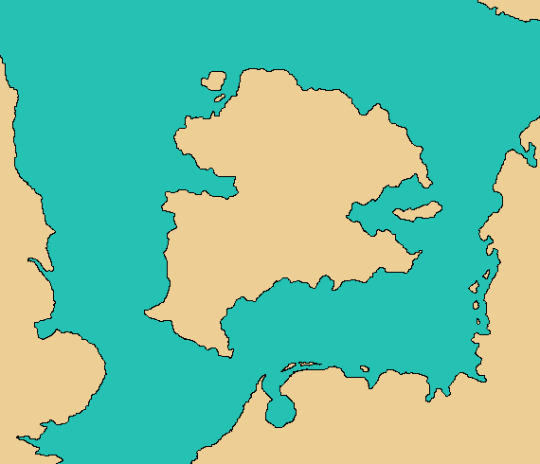
The human pre-classical history of Borland can be summarised as:
With sea level rise about 8k years ago, Borland was cut off from the continent and from Britain (this is when Doggerland was submerged IRL); some Stone Age people remain. They leave some monuments—burial mounds, the Çadrosc labyrinth—and were farmers, but they had no writing or ironworking.
The Celts arrive in Borland shortly before they settle Britain in the second millennium BCE, taking up iron tools and establishing many tribal groups. Due to some later migration from Britain to Borland, they speak a language (Borland Celtic) which is most closely related to Proto-Brythonic.
I assume that as far as possible the history of the rest of the world is indistinguishable from the IRL history up to this point. I continue to do so while the Romans invade and settle Borland shortly after Britain, despite conceding to credulity and allowing a few classical references:
...in Ptolemy's description of the Pritannoi we can understand he referred to the Insular Kelts of Ireland, Britain and Borland as a whole...
...contrasting Hadrian's policies in Britain and in Borland is vital for understanding their different fates in the post-Classical age...
where I admit that the Roman Empire having an entire additional province should probably have some observable effects.
Once the Western Roman Empire collapses, I start properly diverging Boralverse history from IRL history. This begins with a different pattern of Anglo-Saxon migration; the two petty kingdoms of Angland and Southbar arise in western Borland, while the settlement of England proceeds slightly slower than IRL.
Historical divergence spreads through western Europe over the next few centuries, and by 1000 CE things are beginning to go off the rails all across Eurasia and North Africa. I leave the history of the Americas the same until Old World contact (via Basque fishermen stumbling across Newfoundland in 1470 CE), and likewise with Australia.
The map below shows Europe in 1120, during the Second Tetrarchy Period. At this time, Europe was unusually centralised, with four great empires: the First Drengot Empire (red), the German Empire (brown), the Second Roman Empire (purple) and the Single Caliphate (green).
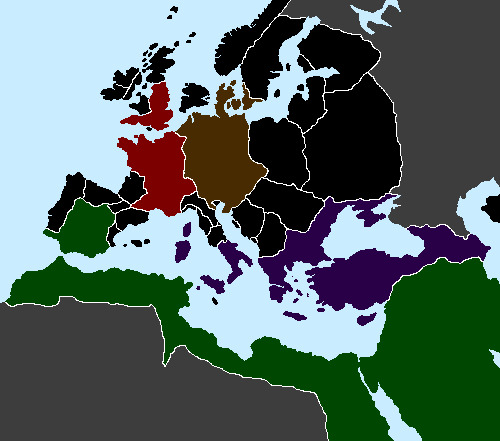
In the modern era, my hope is that the Boralverse world feels fractally uncanny; at every scale something is unexpectedly different, from political borders and languages to fashion and pop culture references.
For clarity, I employ an inconsistent Translation Convention when writing from a Boralverse perspective, mostly using IRL English but peppering in calques of Boralverse English jargon for flavour, such as threshold force "nuclear power" or jalick "garment socially equivalent to a tuxedo".
The Language
The original motivation for this alternate history setting is Borlish (Borallesc), the Romance language spoken on Borland.
It picked up a few Borland Celtic loanwords from the existing population at the time of the conquest (macquar ~ Welsh magu "raise, rear"; vrug ~ Welsh grug "heather"), but was much more influenced through the first millennium by Anglo-Saxon settlement and then Norse conquest during the Viking Age. The following is an example of late Old Borlish (ca. 1240):
…sovravnt il deft nostre saȝntaðesem eð atavalesem n iȝ atrevre golfhavn seȝ hamar dont y verb divin ismetre ac povre paian. peðiv soul ez font istovent por vn nov cliȝs d istroienz istablir…
…uphold our most sacred and ancient duty to let Gulfhaven be the centre from which we will send the Word of God to pagan lands. We ask only for the necessary funds for a new teachinghouse…
The Modern Borlish language has undergone spelling standardisation (most recently deprecated some irregular spellings in 1870), and contains many more Latin and Greek loanwords, along with borrowings from languages across the world.
Y stal zajadau dy marcað nogtorn accis par lamp fumer eð y lun fragnt de mar receven cos equal party a domn pescour pevr jarras e fenogl gostant tan eð eç nobr robað n'ornament fluibond ant queldin raut frigsað ne papir cerous.
The night market's various stalls lit by smoky lamps and the sea-shattered moon welcomed flocks of fishwives sampling paprika and fennel as well as notables in flowing finery carrying stir-fried suppers in wax papers.
In terms of sound changes and grammatical developments, the major points include:
Intervocalic lenition /p t k b d g/ > /v ð j ∅ ∅ ∅/: catēna > caðen "chain", dēbēre > deïr "must".
The use of ç (and c before e i y) for /ts/, and the use of g in coda to represent /j/. Along with some vowel shifts, this leads to things like cigl /tsajl/ "darling".
Total loss of final consonants in multisyllable words, including -s, which leads to:
Collapse of noun declension, including number; Borlish does not mark number on nouns, and if it wants to it uses demonstratives or simply relies of verb agreement: l'oc scuir pasc, l'ec scuir pascn "this boy eats, these boys eat".
57 notes
·
View notes
Text










Jasper National Park, AB (No. 14)
Jasper Forest Park was renamed Jasper National Park in 1930. By 1931, Jasper was accessible by road from Edmonton. In 1940, the scenic Icefields Parkway opened, connecting Jasper to Lake Louise and Banff in Banff National Park.
The first step towards incorporation of Jasper occurred on August 31, 1995, when the Jasper Improvement District was formed from a portion of Improvement District No. 12 (Jasper National Park). The improvement district was subsequently incorporated as a specialized municipality under the name of the Municipality of Jasper on July 20, 2001. The incorporation order established the Jasper townsite as the Town of Jasper and the surrounding balance of the specialized municipality as a rural service area that was deemed equivalent to a municipal district.
The Municipality of Jasper is in the western portion of the province of Alberta within Jasper National Park. It borders the province of British Columbia to the west and Improvement District No. 12 to the north, east, and south. The Athabasca River, which originates from the Columbia Icefield, meanders northward through the municipality. The Miette River, Maligne River, and Snaring River all discharge into the Athabasca River within the Municipality of Jasper's limits.
Source: Wikipedia
#Two Brothers Totem Pole by Jaalen and Gwaai Edenshaw#First Nations#Jasper Park Information Centre National Historic Site#A.M. Calderon#Rocky Mountains#Northern Rockies#Alberta's Rockies#travel#original photography#vacation#tourist attraction#landmark#landscape#summer 2023#Canada#woods#forest#flora#nature#countryside#fir#pine#Jasper National Park#UNESCO World Heritage Site#Yellowhead Highway#cityscape#architecture
48 notes
·
View notes
Text
Last August, my family and I embarked on a road trip through Southwest China to the Tibetan areas of Sichuan province, a Chinese jurisdiction famous for its spicy cuisine and commonly referred to in the West as Szechwan.
At the time of our adventure, China was in the midst of a record-breaking heatwave dubbed by the scientific publication New Scientist as “the most severe [heatwave] ever recorded in the world.” Rivers dried up, wildfires raged, crops wilted, people died from heatstroke and rolling blackouts hit major metropolises, resulting from the severe drought’s impact on hydroelectricity generation. Hundreds of weather stations across the country either tied or set heat records.
I chronicled my family’s vacation on the frontlines of climate change for a guest essay in The New York Times, noting the troubling things we witnessed in Sichuan. To finish the story, I wrote, “What happened in China this summer has made it abundantly clear: Even with concerted and aggressive global action to curb carbon emissions, it’s going to be a rough ride.”
Less than one year after penning those words, I again find myself with a front-row seat to another unfolding environmental catastrophe: the wildfires scorching northern and western Canada.
In the Yukon, 146 wildfires are burning across the territory, with more than 220,000 hectares burned as of Aug. 29. [...]
Continue Reading.
Tagging: @politicsofcanada
#cdnpoli#Yukon#Indigenous persecution#environmental racism#environment#climate change#natural disasters
145 notes
·
View notes
Text
Jewish State Ideas BEFORE Palestine
CRITICAL PREAMBLE: It is important to keep in mind that the idea of building a Jewish State is Zionist. It does not reflect the views of Judaism as a whole, and any antisemetic actions will result in blocking and banning. It is critical now more than ever that we recognize that there is a different.
Your issues in Palestine are with ZIONISM, not Judaism. Do NOT associate them as the same. Doing so is a common Zionist tactic to make comments or opinions against Israel be rebutted that it is antisemetic purely because it comments on actions by Israel and their Zionist government and military.
Again, Zionism and Judaism are NOT one in the same, and should not be treated that way.
Anywho, timeline time!
1820 - Ararat City - Grand Island Niagara River in Western New York. Considered a precursor to Zionism as known today.
1902 - Leaugue of Eastern European States - "would entail the establishment of a buffer state (Pufferstaat) within the Jewish Pale of Settlement of Russia, composed of the former Polish provinces annexed by Russia."
Date Unsure - Herzl Plan - "The Jews who wish for a State will have it. We shall live at last as free men on our own soil, and die peacefully in our own homes." His proposed location? Cyprus
1903 - British Uganda Program - Rejected after (shocker) there were lions in Africa. Also "it was populated by a large number of Maasai people, who did not seem at all amenable to an influx of people coming from Europe." fuckin wonder why. Note that some Zionists were concerned it would "make it more difficult to establish a Jewish state in Palestine in Ottoman Syria, particularly the Mutasarrifate of Jerusalem"
1928 - Jewish Autonomous Oblast in USSR - Proposed by Russia specifcally to prevent a State of Israel AND done because it viewed Judaism as a threat to the state. "In that sense, it was also a response to two supposed threats to the Soviet state: Judaism, which ran counter to official state policy of atheism; and Zionism, the creation of the modern State of Israel, which countered Soviet views of nationalism. Yiddish, rather than Hebrew, would be the national language, and a new socialist literature and arts would replace religion as the primary expression of culture."
Also included the idea of a JSR in Crimea or "part of Ukraine, however these were rejected because of fears of antagonizing non-Jews in those regions."
1940 - British Guiana - "the British Government decided that "the problem is at present too problematical to admit of the adoption of a definite policy and must be left for the decision of some future Government in years to come""
The Madagascar Plan and the Italian East Africa plans were both efforts by Nazi Germany and Fascist Italy to "solve Jewish problem" (YES THIS IS BAD). "Jews from Europe and Palestine would be resettled to the north-west Ethiopian districts of Gojjam and Begemder, along with the Beta Israel community."
1989 - Plans for the West Bank - Contemplation of a Second Jewish State - "Israeli settlers in the West Bank have mulled declaring independence as the State of Judea should Israel ever withdraw from the West Bank. In January 1989, several hundred activists met and announced their intention to create such a state in the event of Israeli withdrawal."
So yea, don't tell me about "homeland" when there were a shit ton of other ideas accepted within the Zionist ideal prior to SETTLING on Palestine. It's "homeland" cause that's where the British Empire could throw Israel. Not because they though it was the "right thing to do" or whatever thing Zionists claim now a days.
#palestine#free palestine#gaza#free gaza#israel is a terrorist state#israel#genocide#fuck the israeli government#gaza strip#idf is a terrorist group
69 notes
·
View notes
Text





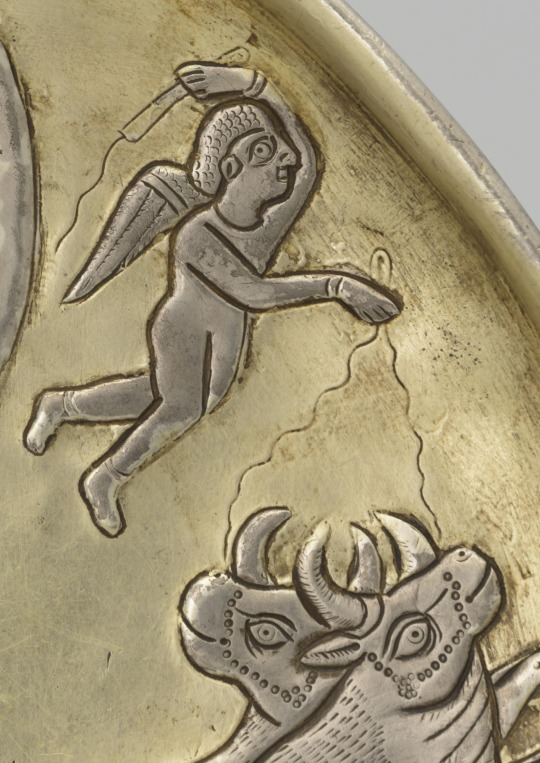
Sassanid silver plate 7th C. CE. Decorated with a figure seated on a couch in a crescent moon and a figure standing in an archway. Found in Klimova, Russia in 1907. The base of the vessel appears to have runic script scratched into it. This item is sometimes referred to as The ‘Clock of Khosrow’ or The ‘Throne of Khosrow’ Plate. Diameter: 21.6cm.
I'm just going to do a brief summary of what caused Persia to fall to Islam.
The Islamic invasion of Persia began sometime between 628-632 CE. From 541 CE to this time Persia had been exhausted by an almost constant state of war. Most of the fighting was with the Byzantine Empire in the west: The Lazic War (541-562), Byzantine–Sasanian War of 572–591, Byzantine–Sasanian War of 602–628.
However, there were also wars with the Turks to the north and the east: Perso-Turkic war of 588–589, Perso-Turkic war of 606–608, Perso-Turkic war of 627–629. In this final war the Byzantines and Turks were allies. This alliance took time to come into being but had been sought out by the Turks almost immediately after they destroyed the Hephthalites, indicating they planned to do to the Persians what they had done to the Huns. The medieval historian Movses Kaghankatvatsi described the war of 627-629:
"At the arrival of the all-powerful scourge (universal wrath) confronting us, the invaders [Turks], like billowing waves of the sea, crashed against the walls and demolished them to their foundations. [In Partaw], seeing the terrible danger from the multitude of hideously ugly, vile, broad-faced, without eyelashes, and with long flowing hair like women, which descended upon them, a great terror (trembling) seized the inhabitants. They were even more horrified when they saw the accurate and strong [Khazar] archers, whose arrows rained down upon them like heavy hailstones, and how they [Khazars], like ravenous wolves that had lost all shame, fell upon them and mercilessly slaughtered them on the streets and squares of the city. Their eyes had no mercy for neither the beautiful, nor handsome, nor the young men or women; they did not spare even the unfit, harmless, lame, nor old; they had no pity (compassion, regrets), and their hearts did not shrink at the sight of the babies embracing their murdered mothers; to the contrary, they suckled blood from their breasts like milk."
Ironically, the Sassanid ruler Khosrow I had married a Turkic princess to win an alliance with them so the two could destroy the Huns together in 560 CE at the Battle of Gol-Zarriun. Khosrow I chose his Turkic progeny, Hormizd IV, as ruler over his Persian children. From Iranica Online:
"Hormozd’s character displeased everyone. He antagonized the Zoroastrian clergy, allegedly killing many of them, even the chief mowbed, and alienated the nobility by killing thousands of them (Ṭabari, I, p. 991; tr., V, pp. 297-98; Balʿami, ed. Bahār, pp. 1072-73; Masʿudi, Moruj, ed. Pellat, sec. 632; Šāh-nāma, Moscow, VIII, pp. 319 ff.). In diplomacy he showed inflexibility, even poor judgement. He disrupted the peace negotiations with the Byzantines and made demands (payment of “tribute”) that the Romans could not accept (Menander, frag., 23.9-24-12529). His contemporary, Menander Protector, lamented that “the Romans and the Persians would have made peace, had not Ḵosrow left this life and his son, Hormisdas [Hormizd IV], a truly wicked man, assumed the crown” (tr., pp. 207-9)."
Finally the Sassanid Empire went into a civil war from 628-632 CE where it had become politically decentralized. The Plague of Sheroe also occurred in 627-628 CE, most heavily devastating the populations in the western provinces with some areas experiencing a 50% mortality rate. Afterward, the Arab Muslims flooded into an already ravaged Persia like bacteria infesting an open wound.
103 notes
·
View notes
Text

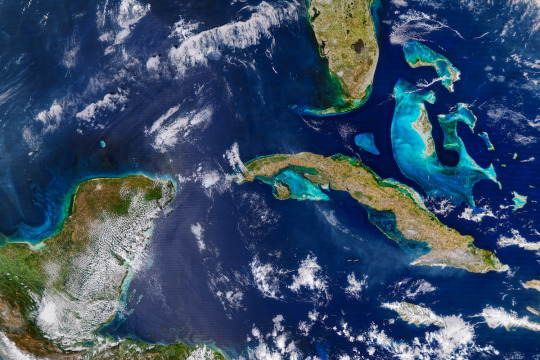

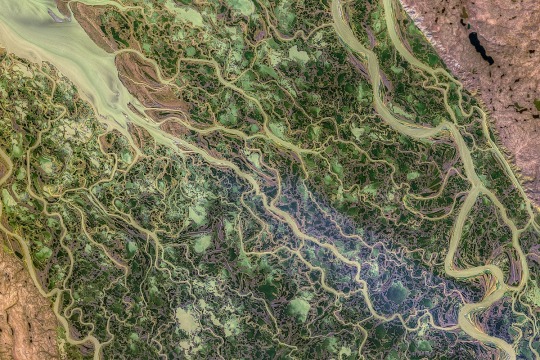

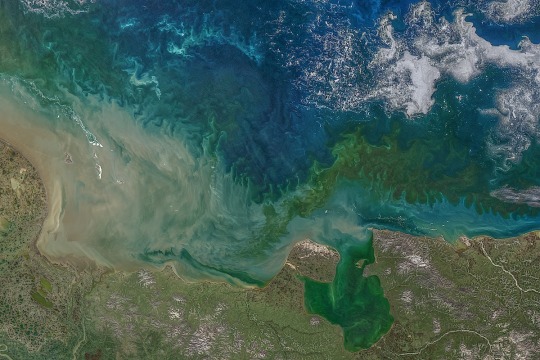

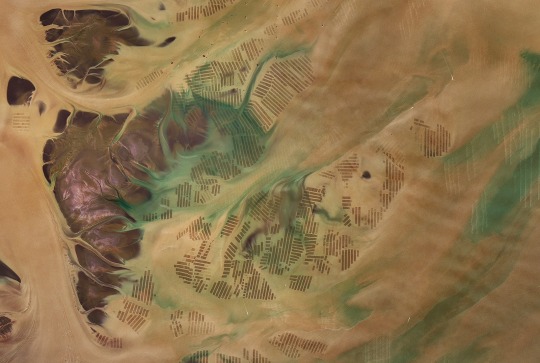
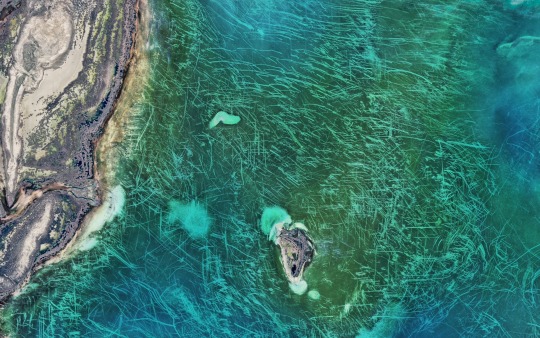

Some cool satellite imagery I collected for something at work. All images are taken from NASA's Ocean Color Web at the Ocean Biology Distributed Active Archive Center (OB.DAAC).
Info about each image under cut.
1. South Korean Aquaculture - Aquaculture operations off the southern end of the Korean Peninsula, featuring tide-drive swirls of suspended sediment and phytoplankton (captured by Landsat 8 on Feb. 19, 2021)
2. Smoke on Blue Waters - Coastal waters of the SE Gulf of Mexico, Western Caribbean Sea, and Lucayan Archipelago. Smoke plumes from forest fires in Cuba can also be seen (captured by Aqua-MODIS sensor on March 1, 2023)
3. Mesopotamia- The artificial Lake Tharthar near Baghdad and the Tigris and Euphrates Rivers (captured by SeaHawk/HawkEye on September 11, 2021)
4. Mackenzie River Delta - A heavy sediment load delivered by Canada's Mackenzie River to its delta by the Beaufort Sea (collected by Landsat 8 on September 9, 2021)
5. Svenskøya - Dense blooms of phytoplankton around the island of Svenskøya in the Svalbard Archipelago (captured by Landsat 8 on July 6, 2021)
6. East Siberian Sea - Color from phytoplankton, suspended sediments, and colored dissolved organic matter from sea ice (captured by Aqua/MODIS on July 20, 2020)
7. Laptev Sea Ice - Thin sea ice in the southern Laptev Sea transmitting colors of water, algae, sediment, colored dissolved organic matter, and the ice itself (captured by Landsat 8 on June 12, 2020)
8. Chinese Aquaculture - Aquaculture in the Yellow Sea off the coast of Jiangsu Province (captured by Landsat 8 on March 8, 2017)
9. Ice Gouges in the Caspian Sea - Lines on the floor of the Caspian Sea in the Tyuleniy Archipelago that were gouged out by ice (captured by Landsat 8/OLI on April 6, 2016)
10. The Bering Strait - The Bering Strait joining the Bering (south) and Chukchi (north) seas. It is the only connection between the Pacific and Arctic Oceans (captured by Landsat-8/OLI on June 17, 2015)
32 notes
·
View notes